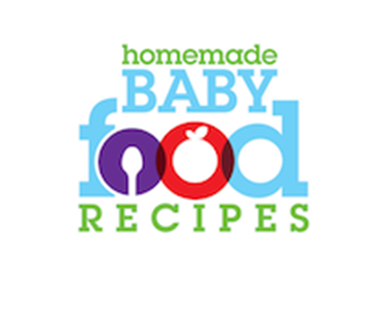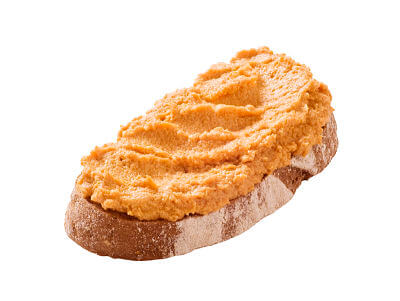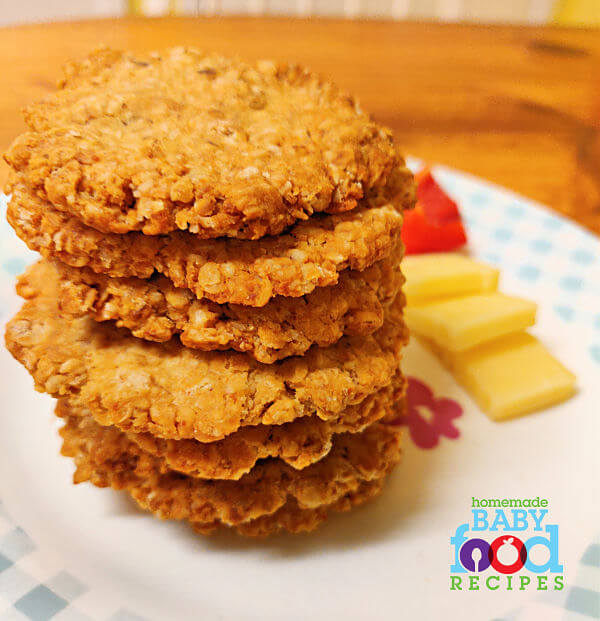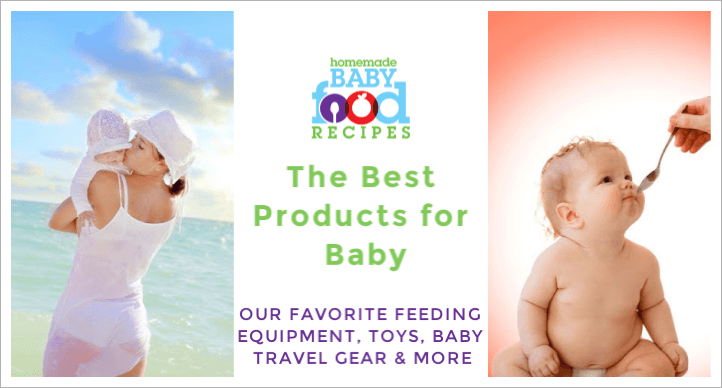Hummus Recipes for Baby – Full of Flavor and Healthy Too!
If your baby is already enjoying a range of fruits and vegetables and you’re looking to expand his menu with exciting new flavours, then look no further than hummus!
Hummus is popular the world over, providing excellent nutrition and a unique taste that our little ones loved as babies and continue to enjoy into toddler-hood and beyond!
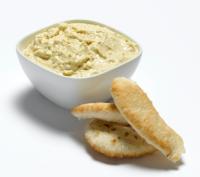
On this page we’re going to look at WHY hummus is so good for your baby and how to make it for him… plus we suggest some unusual twists to the regular recipe to help you create custom hummus dishes tailored to your baby’s preferences!
NOTE: Please check with your doctor before introducing these recipes to your baby.
The information given here is for guidance only and does not replace professional medical advice.
What is hummus?
Hummus – also known as houmous, hoummous, hamos, hommus or homos – is a simple blend of ground, cooked chickpeas (garbanzo beans), tahini, oil, lemon juice, garlic and seasonings.
Particularly popular in the Middle East, it’s an ancient food of disputed origins that has become globally popular, although the exact recipe varies a little from one area to another.
Yet – as you’ll see – it’s the very versatility of this amazing food that makes it such a super addition to your baby’s menu!
Nutrition information
When made with the traditional ingredients of cooked, ground chickpeas and tahini (which is made from ground sesame seeds), hummus is a source of complete protein, containing all nine essential amino acids.
This is because the protein in the chickpeas (legumes) complements the protein in the tahini. You can read more about complete protein here on our ‘Protein Foods for Baby’ page.
This makes hummus a particularly useful food if your baby is following a vegetarian diet, because – unlike meat – very few plant foods contain complete proteins.
It is necessary for anyone following a meat-free diet to consume plant based foods in particular combinations – such as the combination found in hummus.
Please note: Later in this article we suggest leaving the tahini out of hummus if there is a risk that your little one may be allergic to sesame seeds.
Hummus made without tahini is NOT a source of complete protein by itself – but this can easily be remedied by serving it with whole grain bread.
The combination of legumes and grains forms a complete protein in the same way that the legume/seed combination does!
Hummus is also a fantastic source of:
Isn’t it great to know that a food that TASTES so wonderful can be so HEALTHY too?
When can my baby eat hummus?
In general, hummus can be given to your little one from around 8 months of age onwards, although the basic recipe may require some modification.
The ingredient in hummus that most worries parents is, perhaps, the tahini.
Tahini is made from toasted, ground sesame seeds and oil (rather like the sesame seed version of peanut butter).
Allergies to sesame seeds appear to be on the rise.
This is possibly because foods containing them (like hummus) are becoming more popular internationally, leading to more cases being reported.
If there is a family history of food allergy, or if your child has other allergies, you may wish to delay the introduction of hummus.
Children with atopic dermatitis are deemed to be particularly at risk (see our page about sesame allergy for more information).
In any case – and as with all new foods – it’s a good idea to check with your doctor before introducing sesame seeds to your little one.
A popular alternative to delaying the introduction of hummus altogether is to make it WITHOUT tahini.
Tahini has a distinctive flavour and cannot really be substituted in your hummus recipes. It can, however, be left out altogether.
Hummus also contains raw garlic and cooked chickpeas, ingredients which may cause gas.
This is why we recommend waiting until at least 8 months before introducing it, perhaps longer if your little one is particularly prone to ‘gassiness’!
On a personal level, our little ones have enjoyed hummus from around 7 to 8 months.
When we prepare the chickpeas to make hummus, we drain the soaking water several times before cooking them.
This really helps reduce their gas producing potential.
You’ll find more information about this – and other ways in which to minimize the ‘gassiness’ of legumes in general – here on our Lentil Baby Food page.
Hummus may not be suitable for babies with G6PD Deficiency, as it contains legumes – please see this page for more information.
Homemade hummus
Why make your own?
There are lots of reasons why it’s worth taking the time to make your own hummus, which are beneficial to your baby and the rest of the family too!
- Homemade hummus is (surprise, surprise!) much more tasty than the hummus that comes in plastic tubs at the grocery store.
- It is cheaper to make your own hummus than to buy the ready-made variety.
- You can ‘tailor-make’ your own hummus, omitting salt and other ingredients that you feel may not agree with your baby… or adding un-traditional extra ingredients of your own!
THE BASIC INGREDIENTS
Chickpeas/garbanzo beans
These need to be thoroughly cooked.
If you buy them dried, they need to be soaked for at least a few hours (preferably overnight) then boiled until tender.
Save some of the water you cooked them in to thin the hummus later, if necessary.
You can also use canned chickpeas, but buy the salt free/low sodium variety (if not, then rinse them before use).
Many people prefer using canned chickpeas to make hummus because they find them easier than home-cooked chickpeas to puree to the absolutely smooth consistency required.
Tahini
Made from toasted, ground sesame seeds and oil, tahini is a traditional and desirable (but non-essential) ingredient of hummus.
If you have the time, you can even make tahini yourself (there’s a recipe on this site), but – in this case – we find the store-bought version to be perfectly acceptable!
If you’ve never used tahini before, don’t be surprised to find that it has separated when you open it (just like peanut butter sometimes does). Just give it a good stir before use.
Lemon juice
It’s often recommended that you avoid citrus for babies under one year of age because it may trigger a reaction, usually a rash.
However, the amount of lemon juice needed for hummus is relatively small in comparison with the quantity of ingredients used.
We’ve always used it in the hummus we’ve made for our little ones, as it adds a pleasant ‘zing’ that we feel the dish needs, and it has never caused any adverse affects (diaper rash etc).
But, of course, if you prefer to leave it out, then go ahead and do so!
Garlic
The garlic in tahini is usually raw (although you can make it with roasted garlic, too, for a slightly different flavour).
Garlic is a wonderfully healthy ingredient (you can read about its benefits here) and our little ones have loved it from virtually their first tastes of solids!
If you’re unsure about offering it to your baby, use just a little at first and increase the quantity if he seems to like it!
Remember that some varieties of garlic can be quite spicy, so do check on the flavour of your hummus before offering it to your baby.
Salt
Hummus traditionally contains some salt.
We do not recommend adding salt to the hummus you make for your baby.
You may prefer to separate your baby’s portion and add some to the remainder if you are making hummus for the whole family.
Olive oil
The flavour of the olive oil you use really comes through in hummus, so we recommend using a good quality extra virgin olive oil.
Olive oil brings its own unique benefits to the dish – you can find out more about these here.
BASIC HUMMUS RECIPE
1 can chickpeas (or the equivalent amount of chickpeas you have cooked yourself)
2 tbsp tahini (omit this altogether if you prefer)
2 to 3 tbsp lemon juice
2 garlic cloves, peeled and crushed
2 to 3 tbsp extra virgin olive oil
NOTE: This recipe gives you a fairly robust flavour. In addition to leaving out the tahini, you may like to reduce the amounts of garlic and lemon juice used, gradually increasing the quantities if your baby enjoys them.
- Simply drain the chickpeas (if using canned) and combine all the ingredients in a food processor.
- Blend on a low speed for several minutes until the hummus is completely smooth. If the mixture seems very thick, add extra olive oil or water to loosen it up (you can use the cooking water from the chickpeas if you cooked them yourself). The resulting hummus should be nice and creamy.
Hummus is best served as soon as it’s prepared, but you can store it in the fridge for up to 3 days. If it’s been refrigerated, we prefer to bring it to room temperature before serving, as it improves the texture.
You can freeze hummus for up to one month. Stir thoroughly after thawing if any separation occurs.
Delicious and nutritious variations on traditional hummus
You name it, and we’ve added it to hummus!
In fact, if your little one enjoys hummus, then it makes a great vehicle to get him to eat other things that he’d usually refuse… certain veggies in particular!
Here are some tasty and healthy variations to the traditional hummus recipe…
- Roast 1 red bell pepper (this page on our site explains how to do it), then add to the blender with the other ingredients. Reduce the amount of oil in the recipe by 1 tbsp, adding it back if necessary to create the right texture.
- Stir finely chopped sauteed onion into your prepared hummus.
- Use roasted garlic in your recipe instead of raw.
- Add a handful of lightly steamed spinach leaves to the food processor when blending the ingredients.
- Stir ground cumin into your prepared hummus, or top with sweet paprika.
- Replace the chickpeas in the recipe with white beans (like navy beans) or black beans.
- Add 1/4 cup to 1/2 cup pureed sweet potato, butternut squash or pumpkin to the blender whilst mixing the ingredients.
- Add natural yogurt (Greek yogurt is especially good) to the blender for extra creaminess and extra calcium!
- Slice a small eggplant/aubergine into rounds, brush with olive oil and grill/broil for several minutes each side until golden. Chop, then blend with the traditional hummus ingredients.
- Add 1/4 cup pureed zucchini/courgette to the recipe, but reduce the amount of oil you add by around 1 tbsp.
- Add 1 or 2 chopped, cooked beets/beetroot to the hummus and blend well. This produces a fantastic pink hummus that may attract even the pickiest eater!
- Stir a little curry powder into prepared hummus for a unique and surprisingly good zing of flavour!
Hummus serving suggestions for baby
So… you have a wonderful batch of fresh and creamy hummus ready for your baby. So what’s the best way to serve it?
Here are some ideas..
- Serve as a dip with pieces of whole wheat pita, or use to top pieces of bagel, whole wheat toast or melba toast.
- Use a sandwich filling.
- Use as a topping for a baked potato.
- Spread over a whole wheat tortilla, then roll up and cut cross-wise into rounds (see below).
- Serve as a dip with cooked carrot wedges or – for older babies – with pieces of celery or cucumber.
- Use to stuff halved cherry tomatoes for older babies (mmm!).
- Serve a blob of creamy hummus with diced cooked chicken, or even fish.
- Use instead of tomato puree on a pizza base.
And here’s the most popular way to enjoy hummus in our house…
- Thinly spread a whole wheat tortilla with cream cheese.
- Add a layer of canned tuna and a final thin layer of hummus.
- Roll carefully and serve just as it is to older family members, or cut up for younger ones to eat with their fingers.
Totally delicious!
We hope that your baby (and you!) enjoy these hummus dishes – and the health benefits they bring – as much as we do. And if you have any cool hummus preparation ideas of your own, please do let us know!
